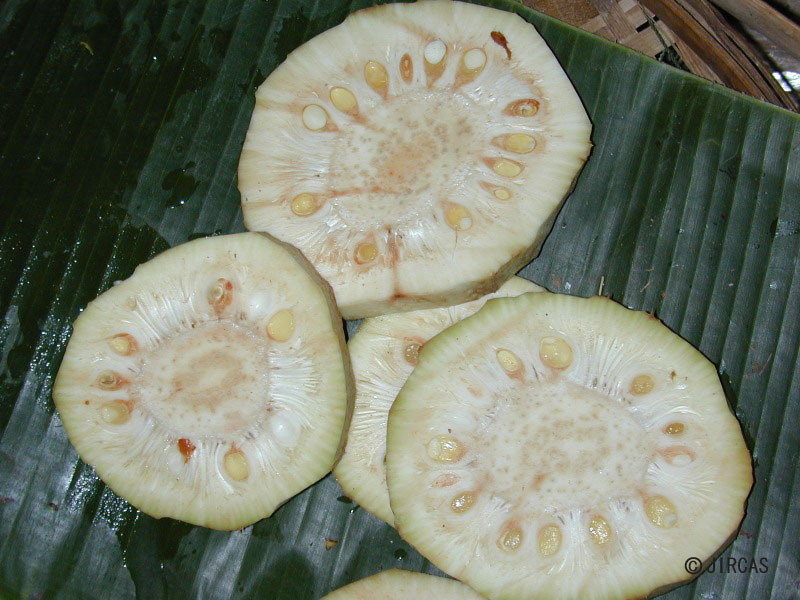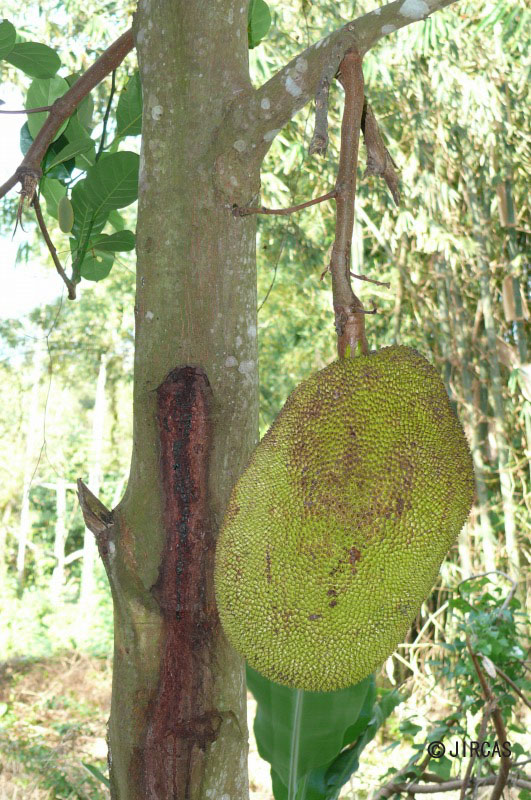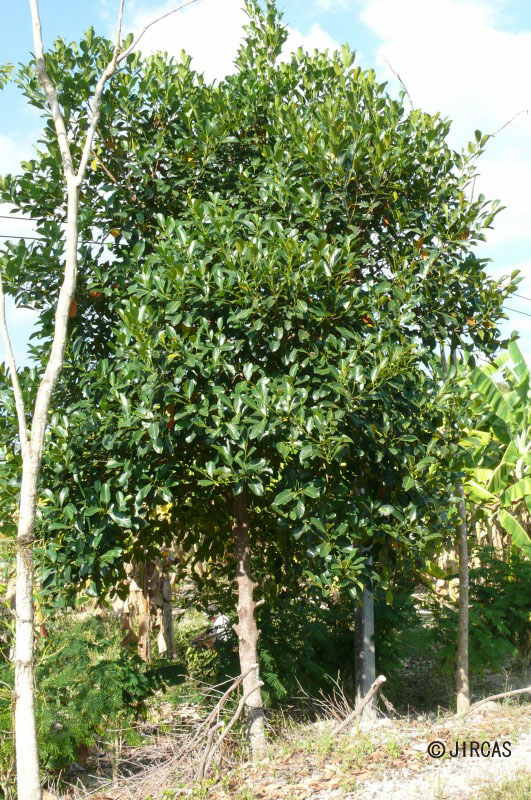Artocarpus heterophyllus Lamk. (Moraceae)
- Scientific name
- Artocarpus heterophyllus Lamk.
- Family name
- Moraceae
- Common name
- Jackfruit (English); paramitsu (Japanese)
- Local name
- Khanoon on
Evergreen, monoecious tree, up to 25 m tall; all parts containing white latex; shoots usually glabrous, occasionally short-haired and scabrid. Stipule ovate-acute, early caducous. Leaves leathery, obovate-elliptic to elliptic, c.15 × 8 cm, broadest at or above the middle; base cuneate; margin entire or often with 1–2 pairs of lobes in the seedling stage; apex rounded or blunt; shiny dark green above, dull pale green below; occasionally short-haired and scabrid; petiolate. Inflorescence solitary, borne on short, leafy shoots arising from older branches and main trunk; male flower heads barrel-shaped or ellipsoid, composed of sterile and fertile flowers closely embedded on a central axis, sterile male flowers with solid perianth, fertile male flowers with tubular, bilobed perianth; female heads borne singly or in pairs, distal to male heads, cylindrical or oblong, dark green, c. 10 × 4 cm, subtended by a spathaceous, deciduous bract. Fruit fleshy, multiple, subglobose to barrel- or pear-shaped, 30–100 × 25–50 cm, with short, pyramidal warts; perianth fleshy, golden yellow, surrounding seeds. Seeds numerous, oblong-ellipsoid, enclosed by horny endocarps.
Grown commonly as a tree throughout Thailand, often for its mature fruits. Thrives in dry, sunny places. Propagated by seed sowing or grafting plants, at a spacing of 4–6 × 6–8 m.
Mature jackfruit is consumed as a fruit. Young fruits are consumed as a vegetable; after boiling, they are added to various curry dishes as a main ingredient.
Mature jackfruit is consumed as a fruit. Young fruits are consumed as a vegetable; after boiling, they are added to various curry dishes as a main ingredient.






